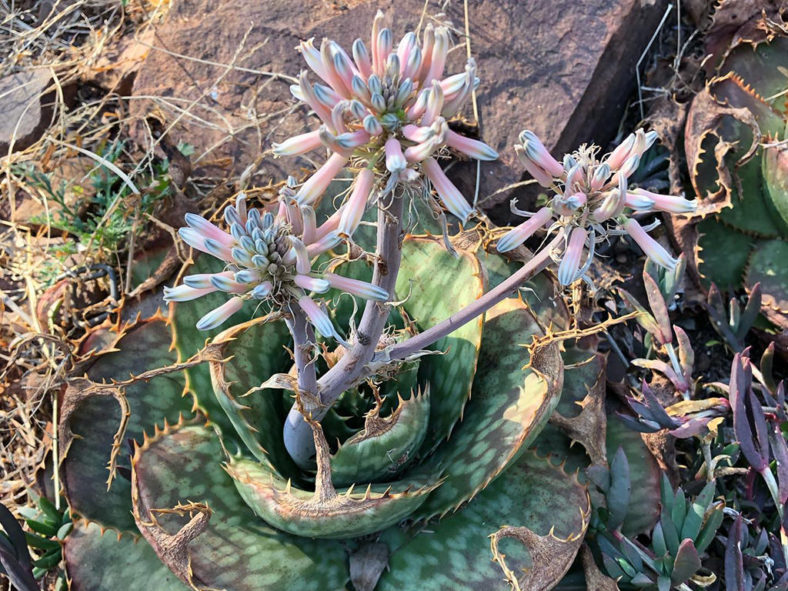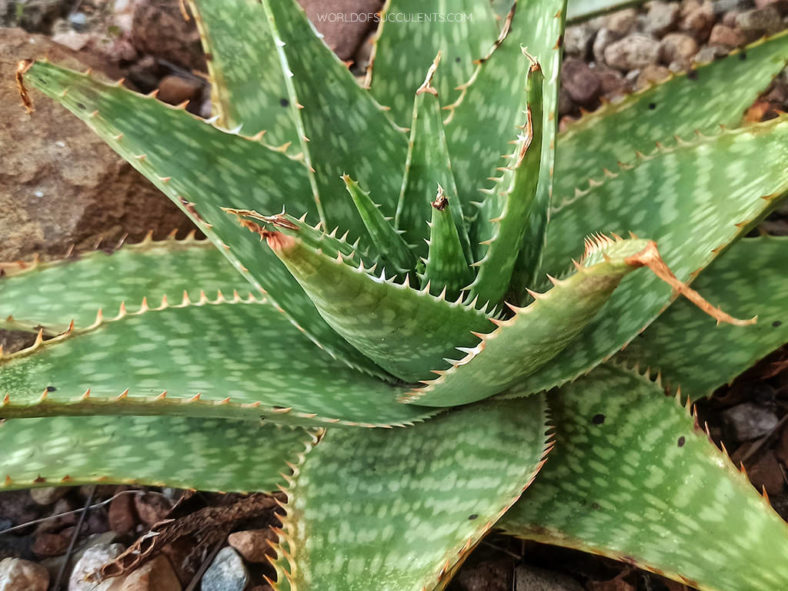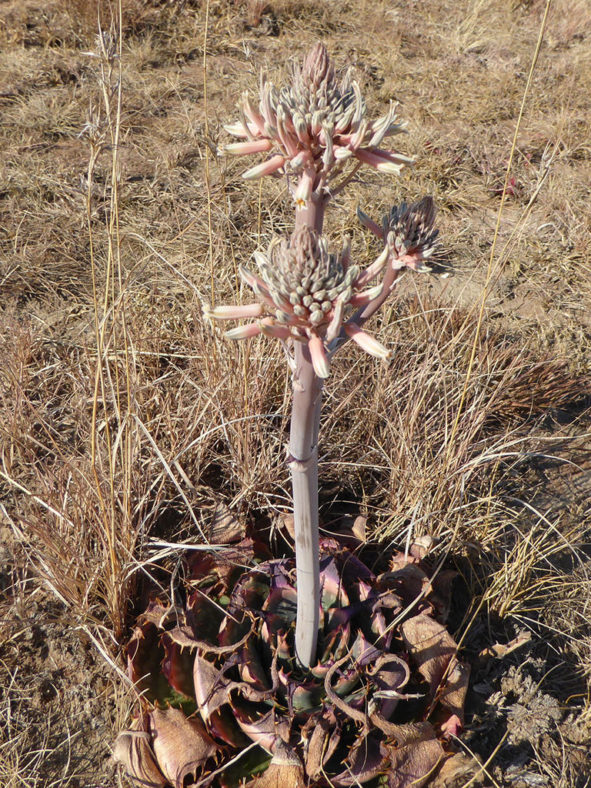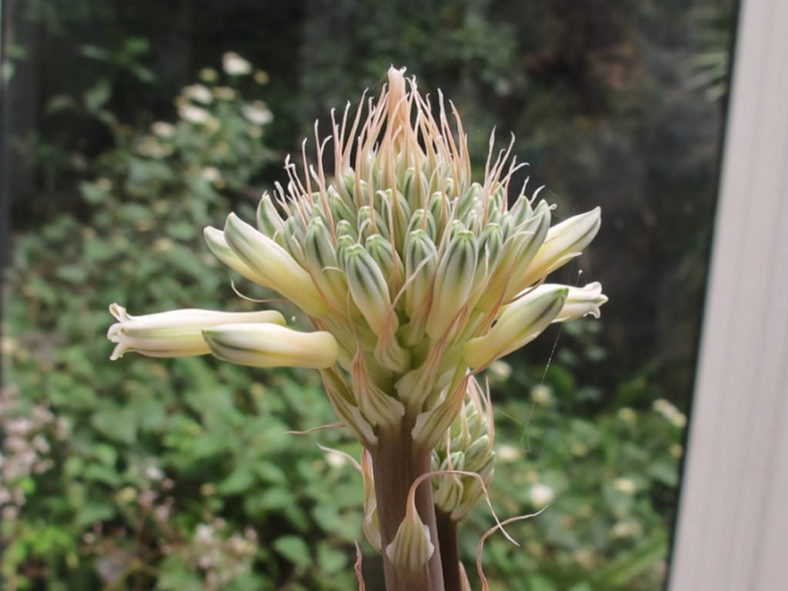Scientific Name
Aloe prinslooi I.Verd. & D.S.Hardy
Common Name(s)
Spotted Aloe
Scientific Classification
Family: Asphodelaceae
Subfamily: Asphodeloideae
Genus: Aloe
Etymology
The specific epithet "prinslooi (PRINS-loo-ee)" honors Gerry J. Prinsloo, a South African grower of Aloes who discovered this species.
Origin
Aloe prinslooi is endemic to the Tugela River Valley between Ladysmith and Muden in KwaZulu-Natal, South Africa. It occurs in dry, tall grassland and open woodland in transition communities between savanna and valley bushveld.
Description
Aloe prinslooi is a succulent plant that forms stemless rosettes of light green leaves with white oblong spots, denser on the upper surface, sometimes arranged in transverse bands. The rosettes can grow usually solitary or sometimes in small groups, reaching up to 10 inches (25 cm) in height. The leaves are biconvex to slightly channeled, measuring up to 8 inches (20 cm) long and 3.2 inches (8 cm) wide. The marginal teeth can grow about 0.15 inches (0.4 cm) long.
The greenish-white flowers become tinged pink and appear in dense, almost spherical racemes on 2- to 5-branched inflorescence from late winter to spring. The inflorescence can grow up to 2 feet (60 cm) tall, while the flowers can reach up to 1.2 inches (3 cm) long.
Aloe prinslooi is easily confused with other Maculate Aloes (Aloe dewetii, Aloe maculata, Aloe mudenensis, Aloe parvibracteata, Aloe pruinosa, Aloe suffulta, Aloe umfoloziensis, Aloe vanrooyenii, and Aloe viridiana). However, this species can be distinguished by its flowers that lack the distinctive globose basal swelling typical of the Maculate Aloes.

How to Grow and Care for Aloe prinslooi
Light: When growing A. prinslooi indoors, place your plant in a window with plenty of bright indirect sunlight. Rotate the pot once or twice a week so that all sides of the plant receive equal lighting. Outdoors provide light shade, especially during the hottest parts of the day.
Soil: Plant A. prinslooi in a well-drained soil mix specially formulated for succulents or make your own. Drainage is essential because too much moisture around roots can cause root rot.
Hardiness: When temperatures shift below 50 °F (10 °C), it is time to bring your plant back inside. A. prinslooi can withstand temperatures as low as 25 to 50 °F (-3.9 to 10 °C), USDA hardiness zones 9b to 11b.
Watering: This succulent does need regular watering but is very tolerant of drought conditions for short periods. Water deeply, but only when the soil is dry. Cut back on watering during the winter months. Do not let water stand in the rosettes.
Fertilizing: A. prinslooi generally does not require fertilizer but may benefit from the extra nutrients. Feed with a fertilizer for succulents in spring and summer only. Be sure to follow label directions.
Repotting: This plant is not particularly fast-growing and will only rarely need repotting. Repot it in the spring in a container a few inches larger in diameter every few years to keep it from becoming rootbound.
Propagation: Propagating A. prinslooi can be done by offsets, cuttings, or seeds from a mature plant. Remove offsets from the mother plant or take cuttings with a sharp knife in late spring or early summer. For best results, sow seeds during the warm months.
Learn more at How to Grow and Care for Aloe.
Toxicity of Aloe prinslooi
A. prinslooi is not listed as toxic for people and pets.
Links
- Back to genus Aloe
- Succupedia: Browse succulents by Scientific Name, Common Name, Genus, Family, USDA Hardiness Zone, Origin, or cacti by Genus
Photo Gallery
Click on a photo to see a larger version.


